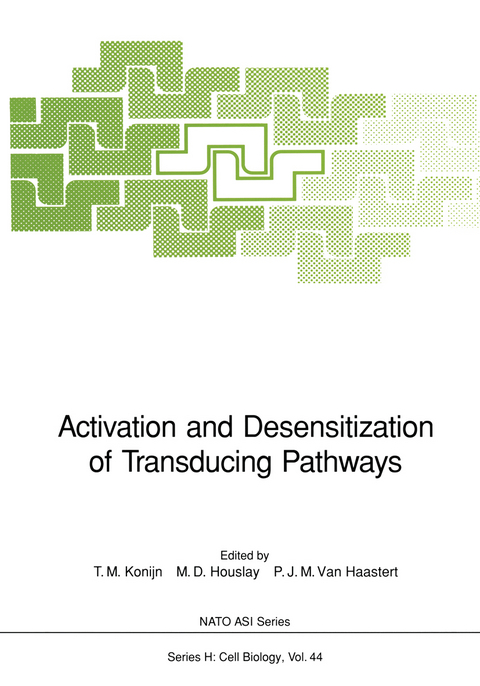
Activation and Desensitization of Transducing Pathways
Springer Berlin (Verlag)
978-3-642-83620-6 (ISBN)
Activation by and desensitization to signals originating from the environment is common in all organisms, ranging from prokaryotes to higher eukaryotes. Recently, a number of novel mechanisms involved in activation and desensitization have been elucidated. The similarities of the molecular mechanisms of activation and desensitization in the various systems are striking. In the first book (1987) on this topic, the functional and structural similarities of the various mechanisms to attenuate the effect of an outward signal were emphasized. Justification to have a second book three years later is the explosive growth of information in the field. More components involved in signal transfer have been discovered and also that several more G-proteins appear to play a role during this process. The interest in signal attenuation concurs with these developments. The emphasis in this book is on the common signal transfer elements responsible for activation and desensitization in animals, plants and microorganisms.
Chemotaxis and Chemosensing.- Activation and desensitization in bacterial Chemotaxis.- Adaptation of chemoattractant elicited responses in Dictyostelium discoideum.- The inositolcycle of Dictyostelium discoideum.- Cyclic Nucleotide-Coupled Systems.- Glucagon activates two distinct signal transduction systems in hepatocytes,which leads to the desensitization of G-protein-regulated adenylate cyclase, the phosphorylation and inactivation of Gi-2 and the phosphorylation and stimulation of a specific cyclic AMP phosphodiesterase.- Multiple pathways for glucagon-induced heterologous desensitization of liver adenylyl cyclase.- The mechanisms of luteinizing hormone-induced activation and desensitization of adenylate cyclase.- Role of protein kinases in the desensitization-sensitization of ?-adrenergic receptor and prostaglandin receptor stimulation of adenylyl cyclase.- Direct involvement of the cyclic nucleotide binding sites in the cyclic-nucleotide-induced charge shift of protein kinases.- Inositol Phospholipid-Coupled Systems.- Heterogeneity amongst myo-inositol derivatives: metabolism of second messengers and synthesis of co-signals.- Role of glycosyl-phosphatidylinositols in insulin signaling.- Agonist and guanine nucleotide regulation of P2Y-purinergic receptor-linked phospholipase C.- G-Protein Activation.- Mechanisms involved in G-protein activation by hormone receptors.- Visual Transduction.- Regulation and rapid inactivation of the light induced cGMP phosphodiesterase activity in vertebrate retinal rods.- Auxin-Coupled Systems.- Characterization and modulation of the sensitivity of plant protoplasts to auxin.- The auxin-binding-protein from maize coleoptiles.- Is a GTP-binding protein involved in the auxin-mediated phosphoinositide response on plant cellmembranes?.- Ion Conductance.- Regulation of the desensitization of the acetylcholine nicotinic receptor.- Cellular Systems.- The control of human thyroid cell function, proliferation and differentiation.- Activation of the regulated secretory pathway in neuronal cells during in vitro differentiation.
| Erscheint lt. Verlag | 19.1.2012 |
|---|---|
| Reihe/Serie | Nato ASI Subseries H: |
| Zusatzinfo | XI, 320 p. |
| Verlagsort | Berlin |
| Sprache | englisch |
| Maße | 170 x 242 mm |
| Gewicht | 582 g |
| Themenwelt | Naturwissenschaften ► Biologie ► Mikrobiologie / Immunologie |
| Naturwissenschaften ► Biologie ► Zellbiologie | |
| Schlagworte | Activation • Aktivierung, molekulare • Desensibilisierung • G-Proteine • Molecular mechanisms • Pharmakologie • proteins • Signalweiterleitung |
| ISBN-10 | 3-642-83620-8 / 3642836208 |
| ISBN-13 | 978-3-642-83620-6 / 9783642836206 |
| Zustand | Neuware |
| Haben Sie eine Frage zum Produkt? |
aus dem Bereich


